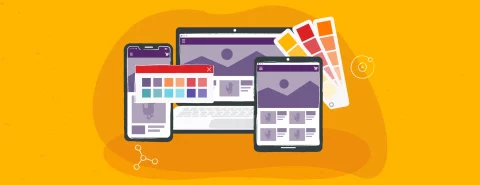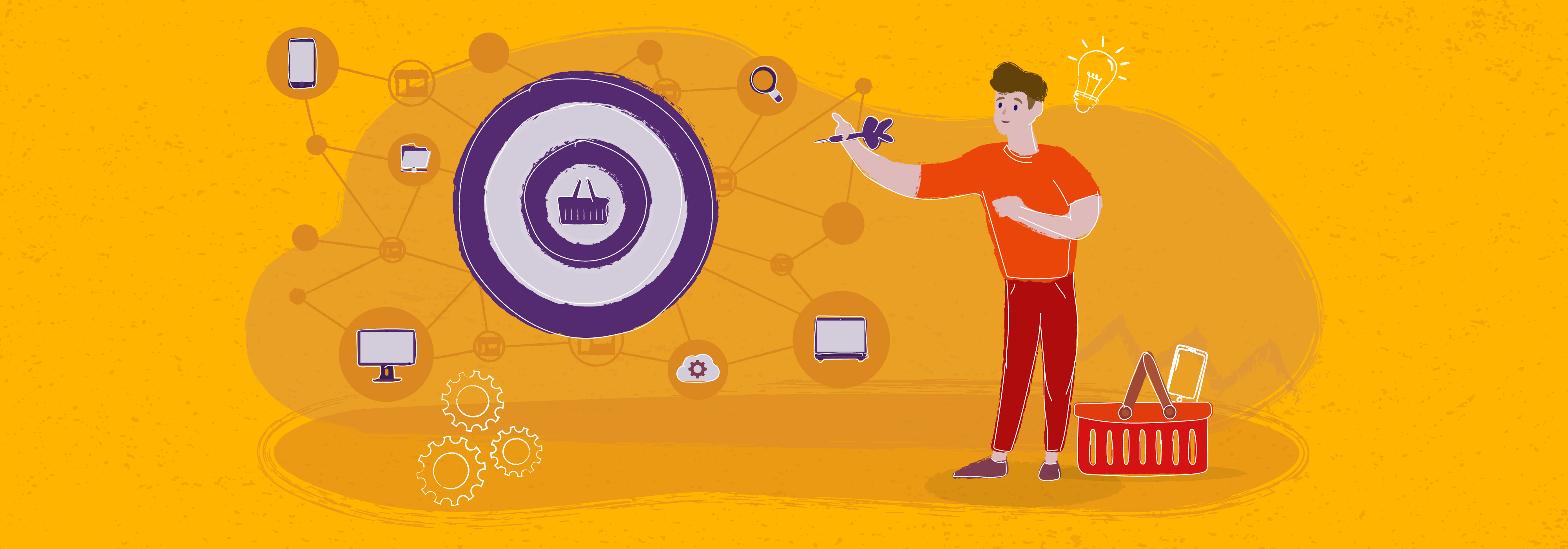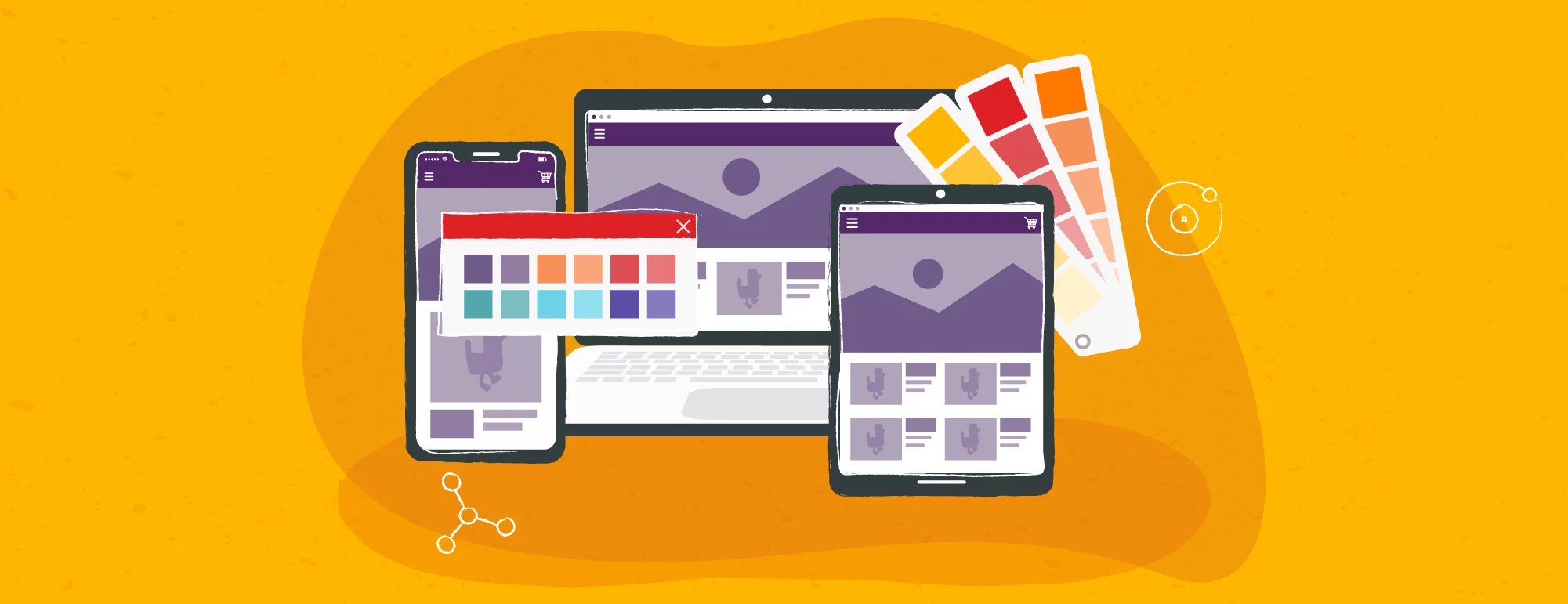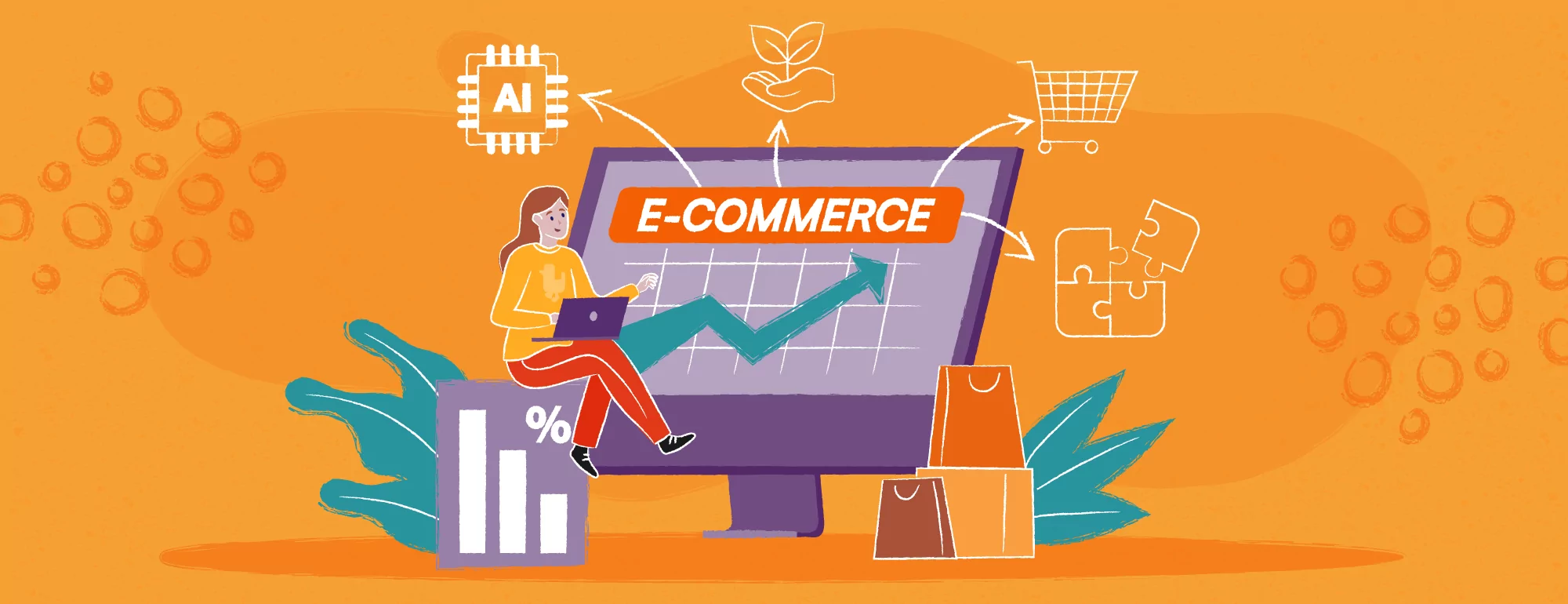Behind the Scenes of Omnichannel Integration
Omnichannel is becoming increasingly popular among businesses, including those in the B2B sector. The benefits of the omnichannel approach are undeniable – happier, loyal customers and more sales. But how does an omnichannel integration actually work? What is its foundation? Which tools should be used? What do you need to consider when implementing these solutions?
I have prepared a practical guide for you in which you will find the answers to the above questions. So let’s get started!
Technology at the Service of Omnichannel Integration
An omnichannel experience is based on embracing and synchronizing multiple sales channels, such as physical stores, online channels, mobile, and social media. This approach enables companies to reach a wider range of customers, provide users with a unified and consistent brand experience across all the channels, and ultimately increase sales and customer satisfaction.

But the omnichannel should not be confused with multichannel, which is a presence in a variety of independent online and offline channels where the customer completes purchases in disconnected environments. Omnichannel commerce involves the implementation of multiple digital technologies, such as product management or content management systems and the key element, systems integration.
In a moment, you’ll see why systems integration layer is essential to implementing an omnichannel customer experience.
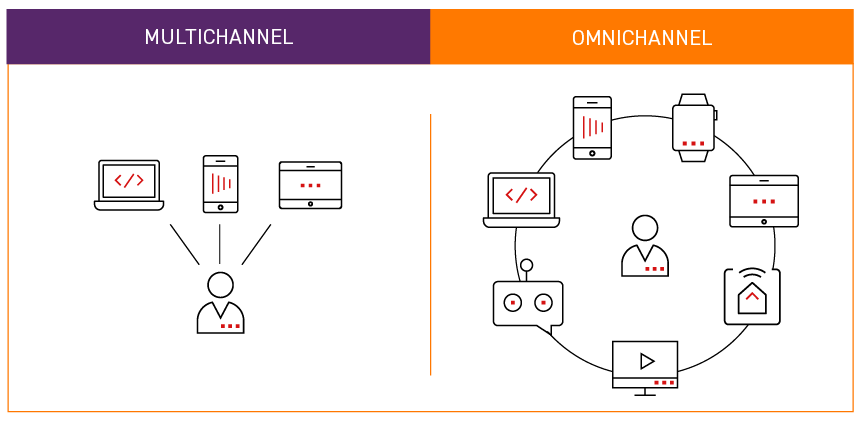
Systems Integration and Omnichannel / An Inseparable Pair
As you already know, the omnichannel approach relies on the harmonious and consistent connection of all channels. So, it should come as no surprise that one of the most important elements of an omnichannel experience is the integration of systems, ensuring the automatic flow of customer data between them.
Most of a business’s vital systems require information from elsewhere and as a part of an omnichannel commerce, companies can integrate multiple channels and systems, such as
- Warehouse Management System (WMS), which enables inventory tracking.
- Sales systems, such as e-commerce platforms for online B2B and/or B2C sales
- An order management system (OMS), which allows you to manage orders and their fulfillment across various channels.
- A customer relationship management (CRM) system, which allows you to get to know your omnichannel customers better so that you can tailor your offerings to their needs.
- An ERP (Enterprise Resource Planning) system, which allows you to manage your business comprehensively, including finances, human resources, and production processes, store prices, or sales documents.
- PIM system, which is used to manage and store product data such as photos, videos, dimensions, or features.
- POS-class systems, which are systems for sales at stationary points of sale.
How Systems Integration Supports the Implementation of an Omnichannel
The benefits of systems integration in implementing an omnichannel strategy are many, and we can look at them from both the customer and the business perspectives.
From the customer’s perspective, a major benefit to the customer is:
Quicker Order Processing
By automating business processes such as exchanging product data between channels, integrating inventory, pricing, orders, or order status, a company can serve its customers faster and more efficiently.
Unified and Consistent Experience
In all digital channels, customers can find product information and browse assortments easily and with similar quality. This is where the Headless CMS comes in, providing consistent communication and easy content management across multiple channels.
Purchase History in One Place
Imagine a situation where a customer in the construction industry orders products via a B2B e-commerce platform, a mobile device, brick and mortar stores and sometimes by phone. By integrating the systems, the customer can view the history of all purchases and even download sales documents from the customer panel, for example, from the e-commerce system, regardless of where the order was placed.
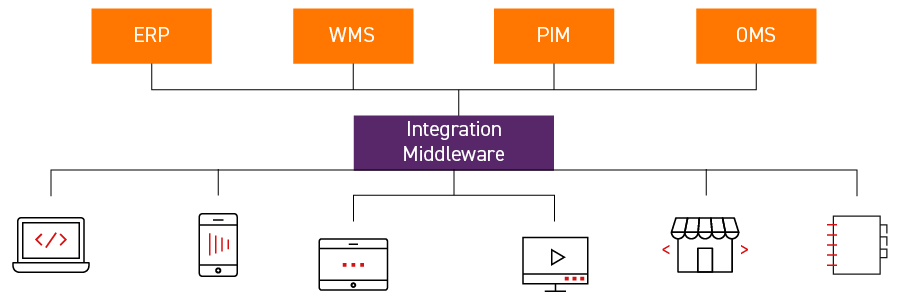
From a business perspective, effective systems’ integration when implementing an omnichannel strategy means:
Less Work in Domain Systems
An integration layer (popularly known as a data bus) makes it easier and less expensive to scale the business with additional channels. It is also much easier to replace individual systems without breaking other systems. Furthermore, it’s possible to use existing integration processes when adding more channels, which undoubtedly streamlines the entire process and saves the company money.
Moreover, by using an omnichannel integration layer, data from system X can be sent simultaneously to multiple platforms, such as a B2C platform, B2B platform, marketplace, or even an ERP to in store experience.
Increasing Worker Efficiency and Quality
By integrating systems, you can automate much of the sales process. No more manually entering data into different systems, sending invoices, or manually updating inventory in an e-commerce store. Integration tools do it all automatically. This frees up your staff to focus on things like acquiring new customers, strengthening relationships with existing clients and developing omnichannel marketing strategy.
Eliminating Errors
Automating the data flow process means fewer errors and the costs associated with them. Imagine a situation where an employee mistakenly enters zero inventory for product X, causing customers to not buy it because it shows up as unavailable in the store. However, if the omnichannel integration layer is responsible for updating inventory in e-commerce systems, such errors can be avoided. The inventory will match the real inventory in each of the sales platforms.
Efficient Enterprise IT systems
Modern integration solutions do not overload IT systems because only data that has changed since the last integration is transferred between systems. The integration component in the architecture is responsible for ensuring that domain systems are called only when needed, eliminating unnecessary traffic and load.
By using an integration layer, integration can be performed in a one-to-many model, taking data from the source system once and sending it to multiple target systems. This contrasts with inefficient point-to-point connections, where each system queries the data for its own needs, causing the source system to query the same data multiple times.
As you can see, integrating systems enables you to deliver a consistent, personalized, channel-appropriate customer experience. For the business, this means streamlined operations, optimized costs and fewer errors.

Tools to Help You Implement an Omnichannel Strategy
Unfortunately, we’re not going to give you a one-size-fits-all solution here because one-size-fits-all doesn’t work when it comes to systems integration. Every company has its own specifics and a different configuration of systems. Some companies need to integrate legacy systems with newer platforms. Others are just starting to build their integration architecture.
All of this can be accomplished with a variety of technologies and tools that each company “assembles” to meet its unique needs. At a general level, we can say that there are certain classes of solutions that are suitable for performing integration tasks for e-commerce and omnichannel strategies. These are:
- ESB (Enterprise Service Bus), or data bus or integration layer. This is a decentralized solution that allows different systems and applications to be connected through flexible and scalable communication protocols. Examples of technologies you can use here are Apache Camel or MuleSoft.
- iPaaS (Integration Platform as a Service) – is a cloud service that allows you to easily create, deploy and manage integrations between systems in the cloud.
Both solutions can be used in the concept of microservices-based architecture, which is especially popular in the so-called MACH approach to IT system architecture. The above solutions use technologies such as REST API, SOAP API, and GraphQL, alongside queuing systems such as Kafka or RabitMQ.
Implement Your Omnichannel Strategy Wisely!
Before jumping into any integration solution as part of your omnichannel approach, keep in mind that digital transformation is a marathon, not a sprint. Choosing the right technology when designing an integration architecture must be preceded by proper analysis and answering a series of questions.
- What systems are already running in the enterprise?
- What are their integration capabilities?
- Do the current systems use the cloud or are they on-premise?
- What is the volume of data and the expected frequency of data exchange?
- What business processes are expected to be handled by the integration layer?
You can answer these questions yourself, or you can benefit from the experience of an outsider. An independent opinion can help you “get out of the woods” and make the best decision.
You will know whether you need an open-source solution or an off-the-shelf product. You will know if you need to implement a custom solution or if you can use an off-the-shelf solution.
In the implementation phase itself, you will want to put a lot of emphasis on testing the solution. Since we are talking about multiple channels integration, this most likely means integrating multiple touchpoints. Some of them will use REST APIs, for example, while others will need to be integrated using database calls or web services. Many systems also translate into many business process scenarios, so before going live, it will be critical to test the solution thoroughly, not only at the business process level, but also holistically, performing end-to-end testing.
System Integration is Essential to an Omnichannel Approach
Now you know that implementing an omnichannel approach in your business requires properly integrated systems. This is the foundation that your customers don’t see, but without it, they won’t enjoy all the conveniences and benefits of seamless experience of shopping online or in physical store.
Interested in implementing omnichannel strategy?
